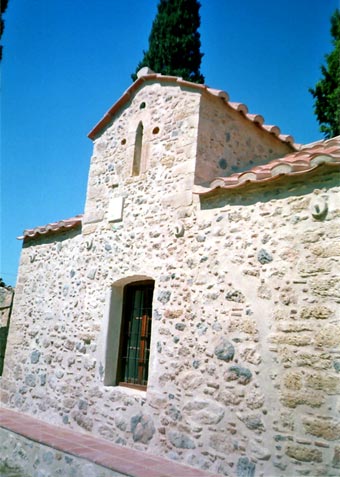Type: Cross - Vaulted
Date: 13th century
Description:
The church is situated near Ano (Upper) Alepochori in Megaris, approximately twenty-seven kilometers away from Megara, close to the Corinthian coast. It is the small katholicon of a monastery dedicated to Christ the Savior, which celebrates on the 6th of August, the day of the Metamorphosis of Christ.
It is a cross-vaulted church and is dated to the beginning of the 13th century. Its dating presents considerable difficulties, since we deal with a local building of Byzantine architecture. Based on iconographic and stylistic criteria its wall paintings are dated to the second half of the 13th century. The scenes are painted on the upper parts, while the saints’ portraits are traced on the lower ones, something usual among the iconographic programs of Byzantine churches. On the apse of the sanctuary we come across a founder’s inscription, which provides information on the founder’s name and status, but it is not dated. The founder is the priest Leon Kokalakis.
The small dimensions of the church are due to its low rank in the ecclesiastical hierarchy. Noteworthy is the fact that we do not only deal with a church but also with the katholicon of a monastery. Indeed, its position (close to the sea, but on a high position which makes it invisible even from a short distance) provided safety to this monastery. Furthermore, the monks, who had probably taken shelter there during the Middle Ages, enjoyed a magnificent natural habitat. According to Doula Mouriki, the grace of this small monument derives from its small size, the exceptional choice of scenery as well as the modest display of the naïve artist’s sensitivity. He painted it in such a way that his work speaks in the most direct way to the Christians’ religious feeling.
Doula Mouriki, The frescoes of the church of the Savior near Alepochori in Megaris, Athens 1978.












